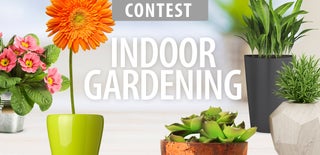Introduction: DIY Grow Box
Prompted by my daughters middle school project, might as well try to build a mini grow box. I have seen similar kits for hundreds of dollars online so how cheap could I make it and for it to do about the same thing.
As the first attempt, some corners were cut and I think now I would use LED red/blue lights instead of the HE lights I happen to have had around the house. The lights I used did fit into an acceptable light spectrum and only used a total of 45w when on but working out the kinks on that part now.
Total cost was minimal as the most expensive single part was the cooling fans and thermostat and I think I got them on sale for about $35. The rest for the most part was salvaged parts from prior projects around the house. However, if bought new I would estimate about $50 total cost.
Step 1: Materials
Materials will depend on what size you want the box to be. In this case, the box was 33" tall x 18.5" wide x 18" deep to house starter plants and those that will reach a max height of about 24". Of course, if you wish to build bigger, add to the below supplies. No special tools needed, just a drill, circular saw, knife, square, and a tape measure. A multi-meter would be helpful if your kind of new to electrical stuff.
Common 1/4 plywood (1 x sheet)
Cooling fans (x2)
Thermostat & Speed Controller (1)
about 8' of 1" x 2" for the basic frame
Hinges (2)
Wood Screws .25" (6) for Hinges
Wood Screws 1" estimate (30)
Underfloor Heating Foil / Foil Tape / Simply Aluminum Foil
1-1.25" Deep Handy Utility Box (3)
24" Red 14 Guage electrical Wire
24" Black 14 Guage Electrical Wire
24" Green/White 14 Guage Electrical Wire
Wire nuts, a couple
Electrical Wire 3 prong (I used one from an old appliance I had but I am sure Lowes has them cheap)
1" x 2" x 6' (1) not needed but I did use it to cover seams between cuts like on top and above the door
Lighting
Electrical outlet (1)
Light switch (1)
Plus and minus using basic creativity.
Step 2: Step Two: Frame It Out
I did not take pictures along the way but I think it is easy enough to figure this one out.
Depening on how big you want it, frame out a cube basically. I braced up the corners to prevent any swaying when moving.
The top back of the box I framed out the part that will hold the electrical switches and sealed it away from the grow area below.
Step 3: Step Three: Add the Sides, Door, Top and Bottom.
I simply measured what was needed and cut. I screwed on the left, right, back, and bottom.
The front contained the door so one single cut along the top, added the hinges, and door done.
The top has two removable parts, one allowing a viewing area and light adjustment in the front and the other access to the power switches.
Step 4: Step Four: Reflective Material
Using whatever you determine is best or you happen to have around the house, now is a good time to add it. I used some Underfloor Heating Foil I had and applied it everywhere I could to contain heat, reflect light, and seal up the inside of the box from moisture. Eventually I ran out and used Aluminum Foil for the inside of the door.
Step 5: Step Five: Fans Holes
For the fans, I used some common fans used in entertainment centers to keep ones X-Box and such cool. I bought a kit with two fans and one thermostat that I could program to come on and shut off at predetermined temperatures. The particular kit I used was simply a plug and play using a USB with no wiring required but I did find out the wires ran a little short thus some wires are seen inside of the box when my original plan was to run all wires on the outside.
Simple enough, how ever big the fans are make a round hole on the bottom back corner of one side about 6" from the bottom to serve as the cool air intake. Create the second hole in the opposite side in the top front of the box to serve as the warm air exhaust.
Step 6: Step Six: Sand/Stain
Of course you can do this when ever you wish but now prior to putting wires in and your fans, it may make better sense to sand and stain now. I was not going for looks here as you may see but I do think some water resistance would be a good idea.
Step 7: Step Seven: Electrical
Actually, this was not as hard as some may think.
Fans: Install the fans, intake fan on the bottom should be facing in allowing it to suck in outside air and push it into the box. Exhaust fan should be facing out pulling air out of the box.
Box 1, Light Switch: In this project I used the light switch as the master control for the whole unit.
Box 2, Junction Box and Power Supply: All wires centralized here and this is where I hooked up the power cable.
Box 3, Outlet: Simple enough, a power outlet for my Thermostat and an extra outlet for a secondary light or whatever.
I will not give detailed instructions on how to wire things because I am not a electrician and I do not want to give bad advice and someone shock themselves but youtube is a great resource for this one.
Temperature Probe: With the thermostat there is a small probe connected to it. I drilled a small hole in the floor of the electrical box and inserted the probe. You can adjust where the probe rest in the box by tiring it off in the electrical box.
Lights: I drilled a small hole in the front of the box to allow the power supply for the lights to come out at the highest point so I can adjust them up and down accordingly. In this case, I used two lag bolts to tie off the power supply for the lights to adjust their height. I used a three outlet light socket for three HE lights that use about 45w of power well below the estimated max of the box. Again, LED grow lights are a little costly but I think worth the price given the reward and they burn a little cooler if heat becomes a problem.
Settings: Once you figure out the plant you want to put in there and required temperature ranges, program the thermostat and you are all done.
Step 8: Step Eight: Final Touches and Grow
Door Lock: I found a little hook and made it work as in the picture.
Notes:
Plants, so far this seems to work best for already developed small plants and lighting seems to be responsible for 99% of my problems with plants getting leggy.
I have had no problems with being too hot or too cool. The lights warm the box up and once they hit my programed temperature, the fans kick on blow some cool air, move the plants around a little and about a minute later the fans cut off.
I have had issues with drying out. I have found the fans pick up the water and take it away so this system will likely be best with some type of drip irrigation system, frequent checks (daily or every other day), or hydroponic system. In the near future I am gong to insert LED lights and use a homemade hydro system and test that out.

Runner Up in the
Indoor Gardening Contest 2016

Participated in the
First Time Authors Contest 2016

Participated in the
Make it Glow Contest 2016













